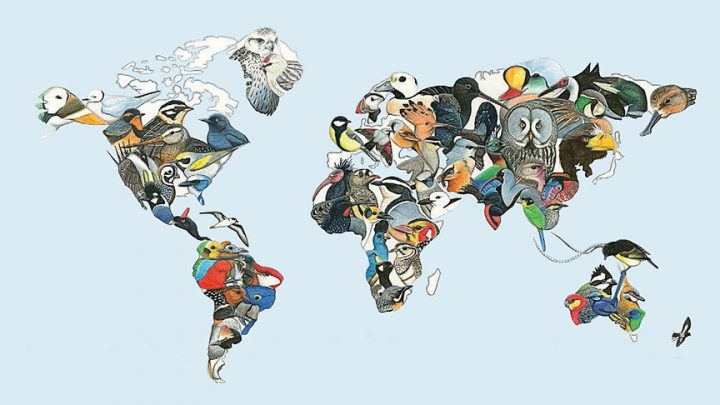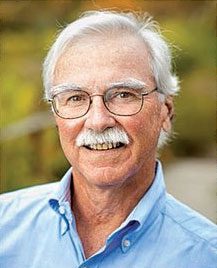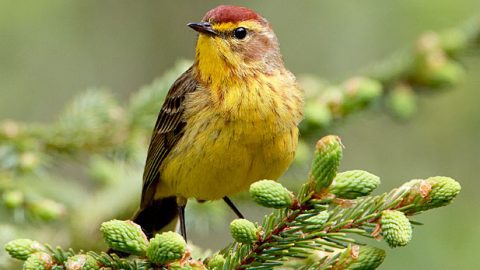View From Sapsucker Woods: The First-Ever Global Big Day (2015)
By John W. Fitzpatrick
From the Summer 2015 issue of Living Bird magazine.
July 15, 2015
On Saturday, May 9, 2015, we learned at once how big this world is and also how small and connected it becomes when we work closely with partners. The first-ever Global Big Day achieved a birding milestone at a scale that is frankly humbling. Who knew that 6,065 species, or 60 percent of the world’s birds, could be detected and entered into eBird on a single day?
The idea of rallying partners around the globe to conduct “big days” at their own places began with Team Sapsucker’s desire to transcend competitive birding during the Lab’s annual spring conservation fundraiser. For decades we’ve participated in the World Series of Birding, hosted by New Jersey Audubon and Cape May Bird Observatory, earning gifts from supporters based on the number of bird species identified during a hectic 24-hour race through New Jersey. This year, the Redheads—our three student teams—kept the tradition alive admirably, winning the statewide and big-stay competitions and placing second in the Cape May County event. Rather than striving to top its own recent big-day records in Texas and the Southwest, Team Sapsucker envisioned something completely new. They went to Panama, teamed with partners, and rallied a global constituency to conduct their own big days (see “Big Day Goes Global,” on facing page).
Global Big Day (GBD) resonated all over the world as a locally based celebration of biodiversity conservation through birds. In Panama, Team Sapsucker spent the frenetic preceding week alternating between scouting expeditions and press appearances. The team was well taken care of by the amazing Raúl Arias de Para and his Canopy Family ecotourism group. Canopy Tower guide Carlos Bethancourt accompanied the team and helped them find 320 species. Rosabel Miró and Panama Audubon Society creatively used GBD to initiate discussions about birds and conservation that extended from radio and television to the highest levels of government. The entire Central America eBird team and Mexico’s CONABIO engaged people throughout Middle America, and BirdsCaribbean coordinated observers in the West Indies.
In Peru, CORBIDI published an online map showing more than 120 GBD sites across the country, and Peruvian teams produced a staggering 1,183 species. Energy in Brazil was equally amazing, as SAVE Brazil, Butantan Bird Observatory, and Avistar recruited birders who submitted the most checklists for any country outside the United States and Canada, and an amazing 1,126 species. Good-natured banter between Brazil and Peru, as their neck-and-neck results accumulated on eBird, was hailed (by a Brazilian, no less) as “more exciting than the World Cup!” With assistance from American Bird Conservancy, the Colombian conservation group ProAves, and Asociación Calidris rallied to record 864 species on GBD. Prediction: given the awesome diversity of birds in that country, we might see Colombia challenge—and perhaps even overtake—Peru and Brazil next year!

Partners rallied across the Old World as well, including Australia (Eremaea and University of Queensland), India (BirdCount India), Taiwan (Taiwan Endemic Species Research Institute), the Philippines (Wild Bird Club of the Philippines), Portugal (Portuguese Society for the Study of Birds), and Malaysia (Bird-i-Witness). The Sandakan Borneo Bird Club mounted an impressive effort in Borneo and Brunei, where sighting of the extraordinary and deeply endangered Bornean Peacock-Pheasant knocked another species off eBird’s dwindling “missing species” list.
The complete list of partners whose efforts came together on Global Big Day would fill this page. Much more exciting and farreaching than the output of a single day is the immense energy that these partners bring to birding and local conservation initiatives in their countries every day. Hats off to all of you, in all of your places around the globe, and more power to your amazing work in celebrating and saving the world’s natural places. This is but the beginning.

All About Birds
is a free resource
Available for everyone,
funded by donors like you
American Kestrel by Blair Dudeck / Macaulay Library



